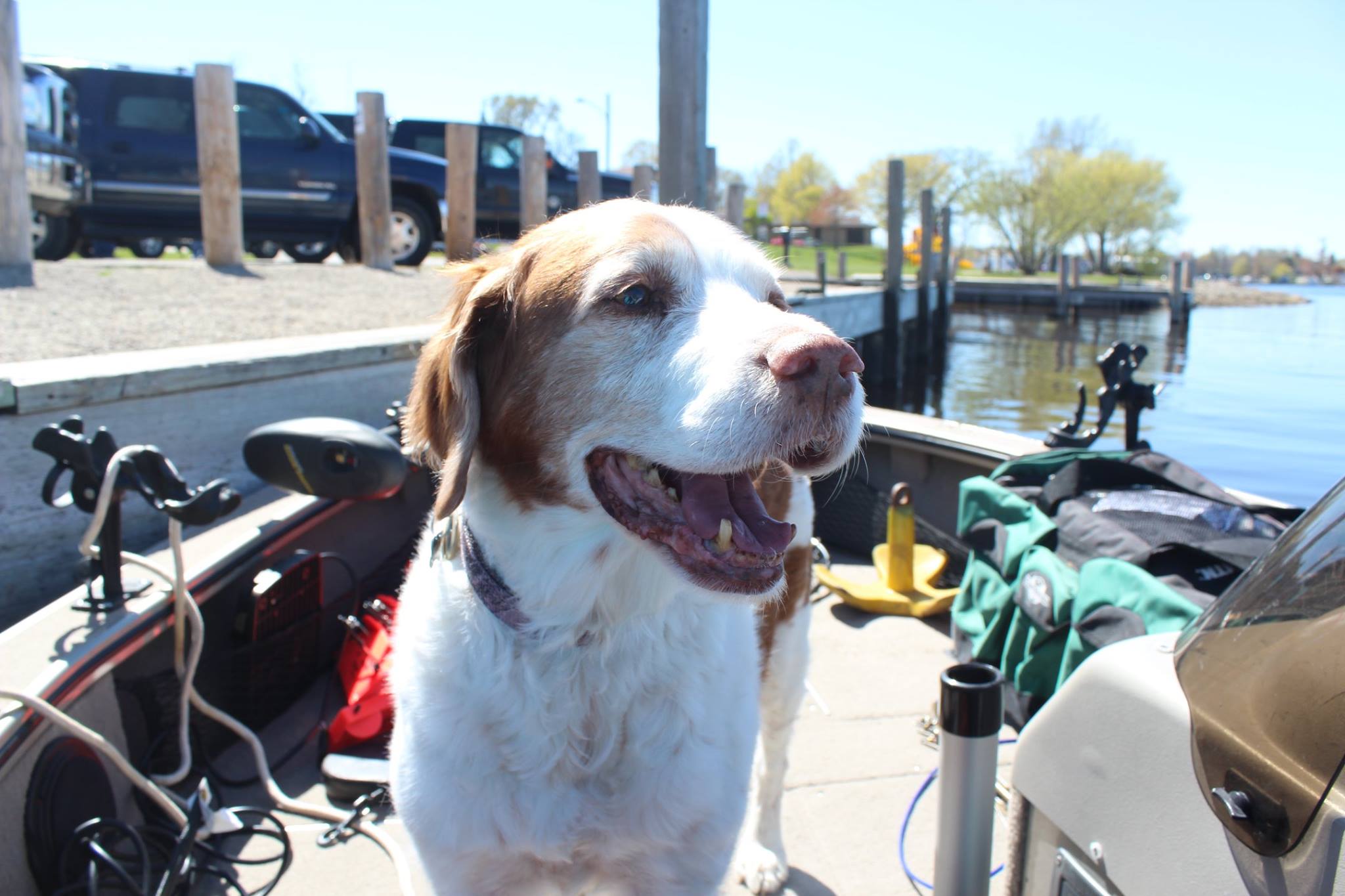By Katie Anderson
Incontinence can be one of the most frustrating conditions that pet owners face. Many elderly, once house-broken dogs and cats develop some form of incontinence, from leaking a small amount of urine when they sleep to being completely unable to control the release of all urine or feces. Although stepping in a wet puddle or seeing urine drip are the most obvious signs of incontinence, owners may also notice their pet excessively licking the vulva or penis area. Pet parents may also notice small wet spots or an offensive smell to their pet’s bedding after it becomes contaminated with urine.
A number of different conditions can lead to incontinence in elderly pets. Your veterinarian can diagnose the cause of urinary incontinence with a physical exam and a few basic tests. He or she will likely perform a urinalysis to look for a bacterial infection or the presence of bladder stones. X-rays of the urinary tract can also diagnose any abnormalities in your dog’s plumbing system. Finally, a number of different blood tests can be run to look for underlying diseases and kidney damage. Depending on the cause of your dog’s incontinence, different treatments can be used to manage this condition.
Here are some of the more common causes and treatments of incontinence:
- Hormone responsive urinary incontinence: this is a disease of neutered and spayed dogs, particularly females, caused by a lack of sex hormones. The muscles that hold urine in the bladder become progressively weaker over time, leading to urine leakage, particularly when the pet is sleeping or lying down. Most dogs with this type of incontinence respond well to medications which tighten sphincter muscles, such as phenylpropanolamine (PPA) or diethylstilbestrol (an estrogen product). For dogs that do not respond to medication, surgical options include collagen injections into the sphincter muscles or placing a constricting ring at the site of the sphincter.
- Overflow urinary incontinence: A number of diseases and medications can cause increased thirst in elderly pets, and the more water your pet consumes, the more urine is produced. This means that your pet’s bladder becomes maximally distended, especially at night when your pet spends long hours sleeping. Bladder distension can override the sphincter muscles and lead to urine leakage. Common causes of increased thirst include kidney and liver dysfunction and endocrine diseases such as Cushing’s, Addison’s, and diabetes. By identifying and treating the underlying cause of your pet’s thirst, you can often correct the incontinence. If your pet seems to be drinking more water, asking to go outside more frequently, or producing large volumes of urine in the litter box, see your veterinarian for further testing. Even if your pet is drinking more water, you should NEVER limit your pet’s water intake, as this can lead to serious complications in pets with any of the above diseases.
- Neurological diseases: Diseases within the brain or spinal cord can interfere with the signals needed to control normal urination and defecation. Pets with neurological disease often display other symptoms, such as hind leg weakness or tremors. Therapy for this type of incontinence depends on the underlying disease.
- Sphincter abnormalities: Defects in the urethral or colonic sphincters can cause either urinary or fecal incontinence in pets. These abnormalities may include bladder/urethral stones, prostate gland disease, tumors, or infection/abscess of the anal glands. Again, therapy for this type of incontinence depends on the underlying disease.
- Senility: Some elderly pets simply become unaware that they are dribbling urine or forget their housetraining. Unfortunately there is no treatment or cure for this condition, and our focus turns to managing incontinence at home.
Although incontinence can be distressing for both owners and pets, it can be managed at home through a number of different strategies. These include:
- Pet diapers or belly bands: these can be purchased at pet stores, or you can make your own belly band using fabric, Velcro closures, and sanitary pads. When using diapers or belly bands, be sure to change them regularly and keep your pet’s skin as clean as possible using soap and water or Baby wipes. If your pet’s skin becomes irritated, aloe vera gel or Preparation H can be used to soothe the area. Always use non-toxic products as your pet may lick them off and never use any products containing zinc, such as diaper rash ointments.
- Waterproof pads or beds can be used to protect your pet’s sleeping spot. Remember to change or launder soiled blankets or towels frequently.
- Frequent walks or trips outside, especially after sleeping, can help dogs with overflow incontinence. For cats, ensure that the litter box is in an easily accessible location, close to where your pet sleeps.
In many elderly pets, incontinence can be a sign of underlying disease or discomfort, so it’s important to consult your veterinarian and pursue diagnostic testing.

